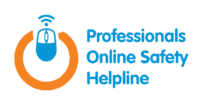Possible responses
This has the potential to bring CECYP and birth families together, but this is not always wanted, or is done without considering the consequences. It is important to be clear about the need to report any safeguarding issues but do this openly and as far as possible with the consent of the CECYP.
Information needs to be passed onto the educational settings designated safeguarding lead(s).
Positive strategies may include:
- Focusing on the problem not the person, switching from deficit to asset perspective (i.e. recognising the critical digital literacy skills, agency that the CECYP has used)
- Strength-based work including postural work with CECYP about identity and/or life history/Life Story Work
- It would be valuable to see incidents such as these as openings for relationship building with the CECYP, rather than just as setbacks, or as adding to a list of concerns









